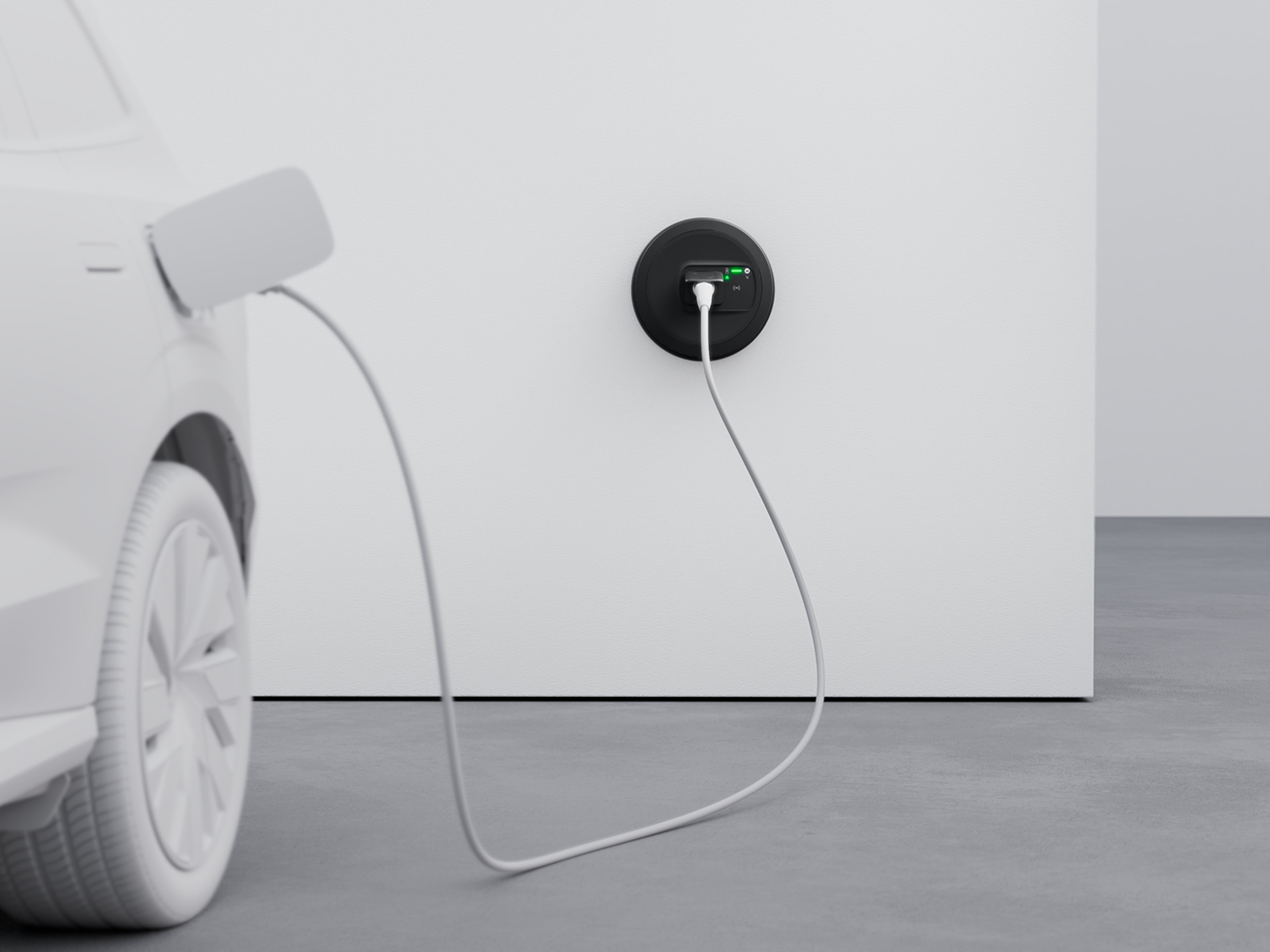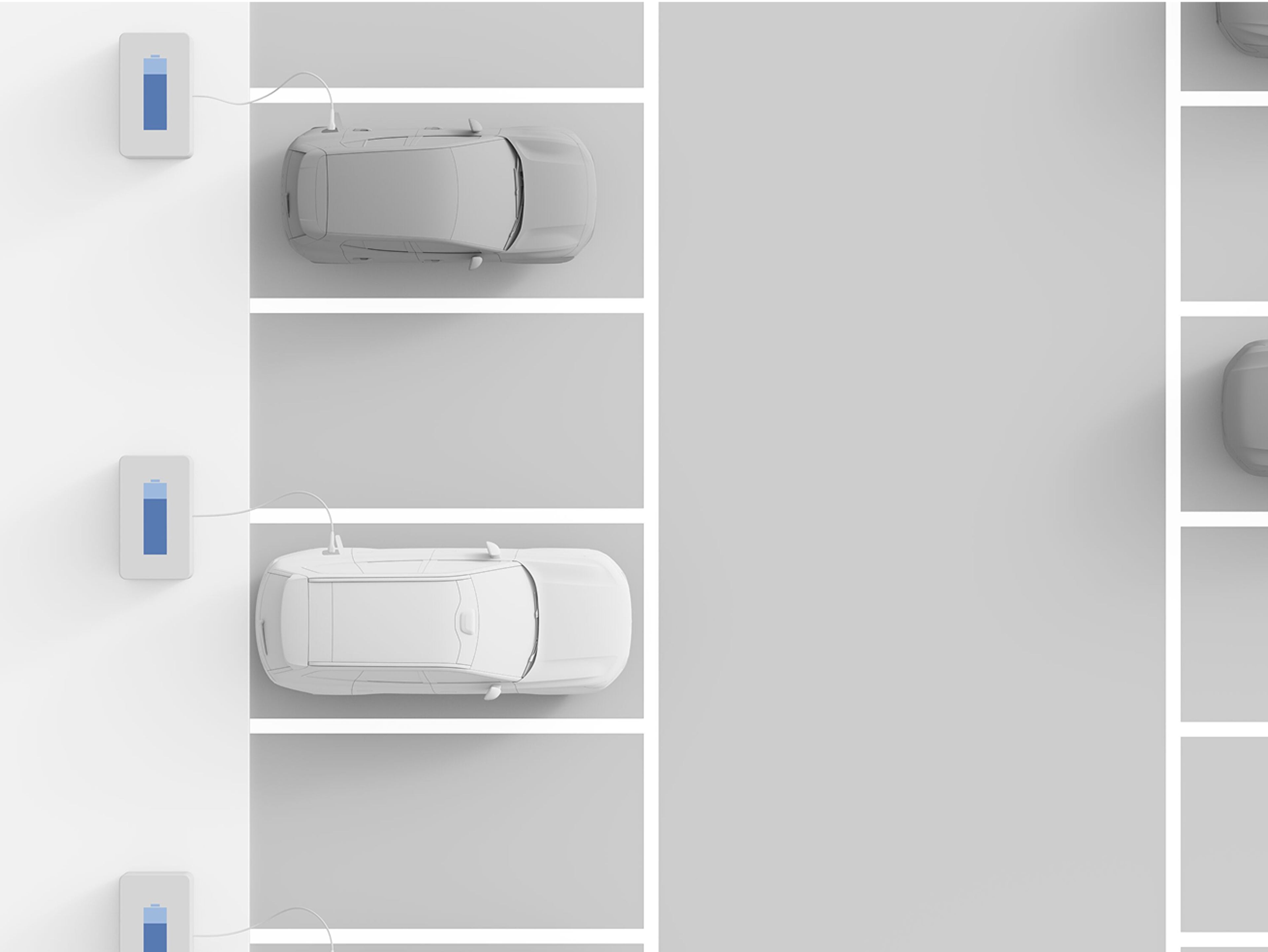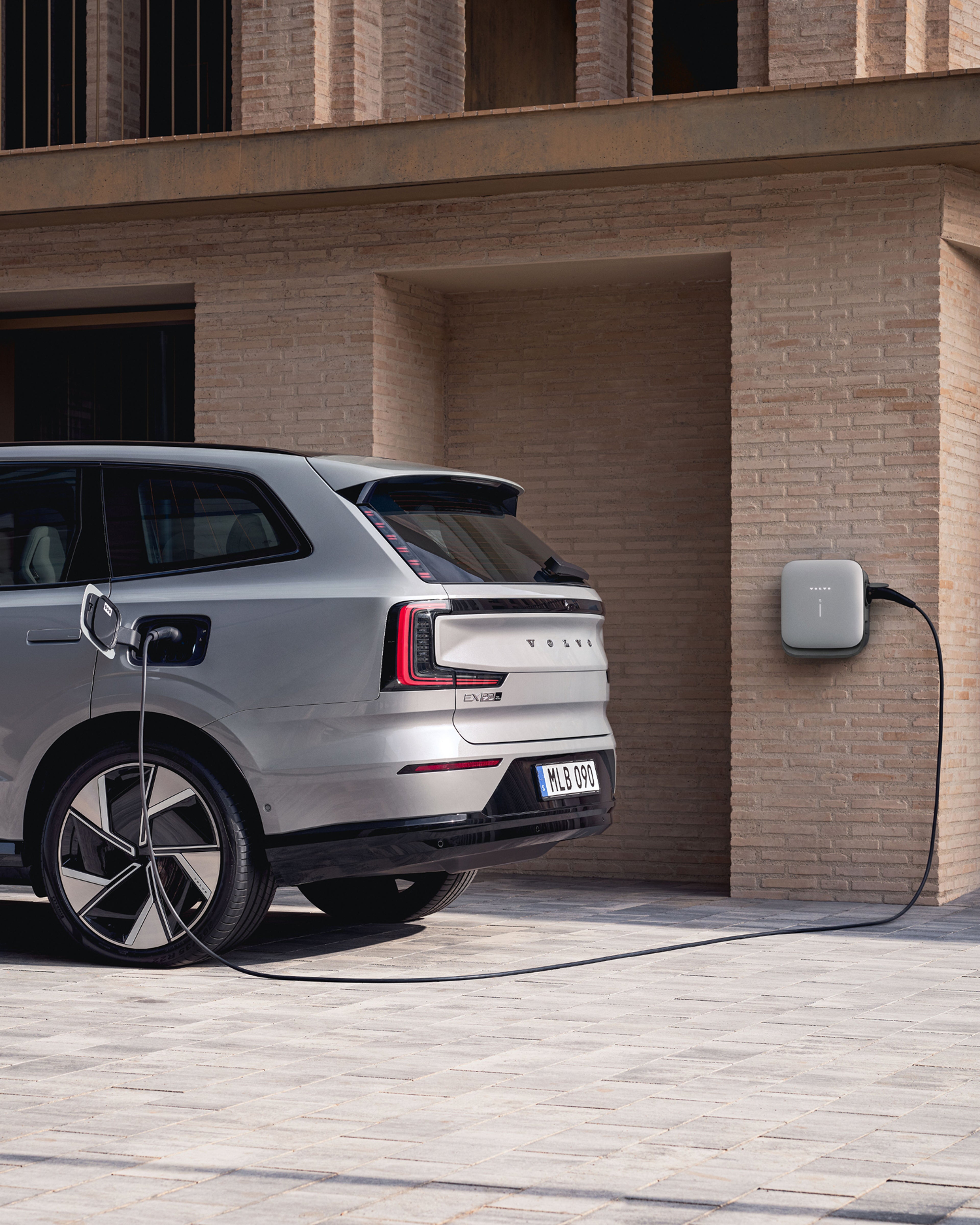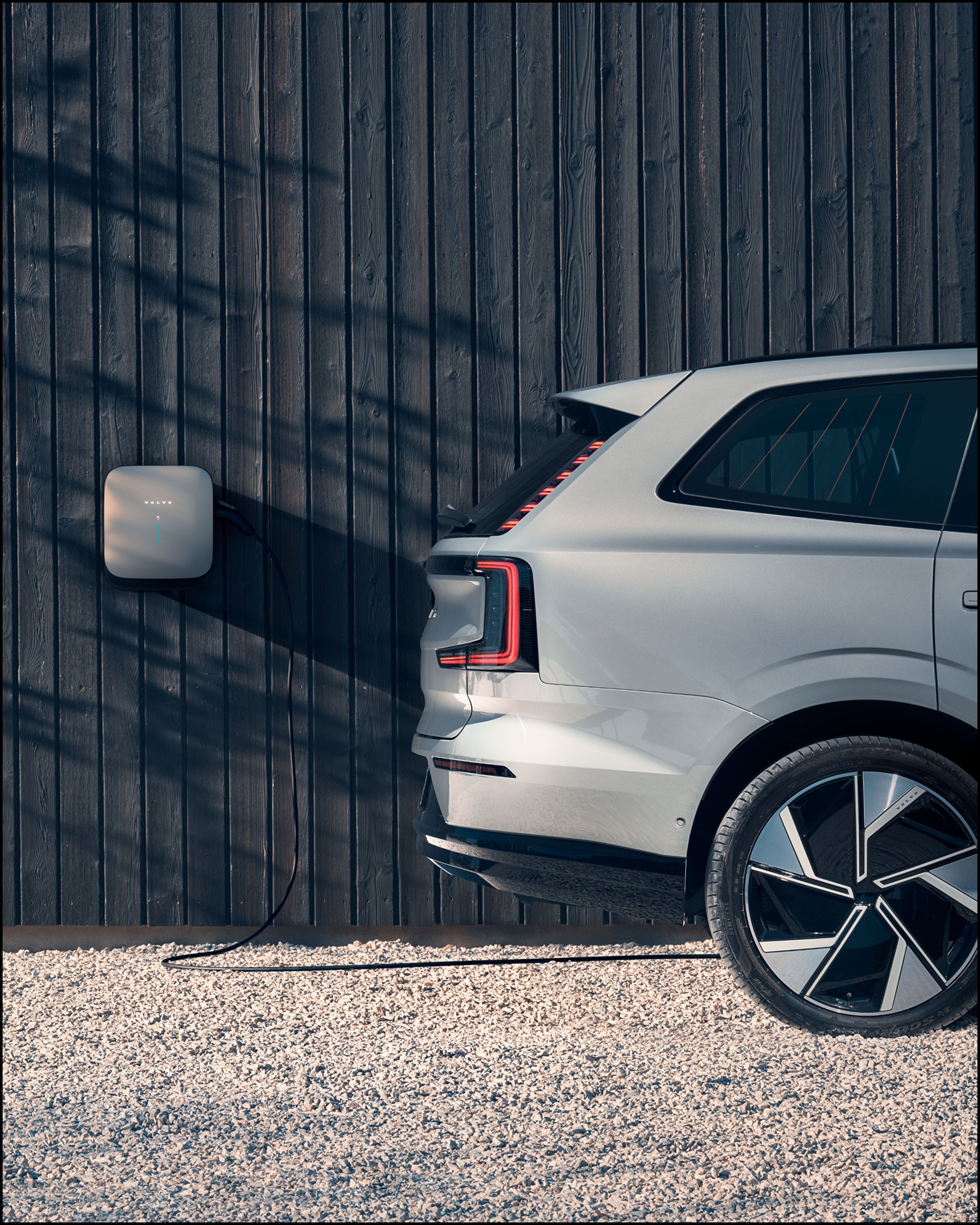Charging a Volvo electric car at home
Wake up with your electric car charged and ready for your next journey. Charging at home is convenient and cost-effective. With an intelligent Volvo wallbox installed on your property, you get complete control of all charging features. Scheduling your charging for off-peak hours can lower your costs while supporting a more balanced energy grid.

Installation of an electric car charging station
Enjoy convenient and simplified charging with a wallbox at home. Installation is quick and hassle-free, and should be performed by a professional installer. By complementing the wallbox with a dedicated real-time electricity meter, you can help increase charging efficiency even further. Contact your local dealer for more information about available installation services.
Find a dealerCosts of charging a Volvo electric car at home
When it comes to cost, charging an electric car often beats gas–making it a smarter long-term choice.
Schedule charging to save
Our tool can help you calculate approximate charging costs for an electric Volvo car. Just use the sliders to add your yearly mileage and household energy costs per unit.
Estimated charging cost *
$0 /month
Yearly milage
0 km
Household energy cost
0 /kwh
Start every day with a full battery
Home charging is a cost-effective way of adding more mileage to your electric car. It’s also smooth and easy. Opt for the Volvo wallbox – a 22kW electric car charger that will power up your electric car in just a few hours and have it ready to go at your convenience.

Make the most of your range
Precondition your Volvo’s cabin while it’s connected to the wallbox to bring it to a comfortable temperature before you start your journey. This approach maximizes your range, as the battery won't be depleted to heat or cool the cabin while driving. Similarly, pre-heating your battery while connected to the wallbox can enhance performance and efficiency.
Learn more
Electric car charging for apartments
There are several electric car charging solutions available if you live in an apartment. If you have dedicated off-street parking you can consider installing a charging station after consulting your property manager. You can also use a portable charger that connects to standard outlets or charge your car at a public charging station. Contact your local Volvo dealer for additional information and guidance on the most suitable charging solution for you.
Talk to a Volvo specialistFAQ on charging
Does Volvo offer a home charger with the purchase of an electric car?
We offer a variety of home charging solutions for your electric vehicle for purchase, tailored to meet the specific needs and regulations of each market. In some areas, you can purchase a Volvo wallbox directly, while in other regions, we have established partnerships with regional or local providers to offer compatible home charging options. To determine the specific home charging solutions available in your area, please visit your local retailer.
Can I use my standard socket to charge my Volvo electric car?
Yes, though it is not recommended. As a back-up solution, it is possible to use a standard household socket to charge your car. Charging via household outlets is very slow, and not recommended as a regular charging option for safety reasons, which is why we recommend installing a dedicated home wallbox for your home charging needs.
What equipment do I need to charge my Volvo electric car at home?
To charge at home, you’ll need either a standard household socket or a dedicated wallbox for faster, more efficient charging. We recommend installing either a Volvo wallbox or a recommended wallbox from Volvo for optimal safety and performance.
What are the differences between Level 1, Level 2, and Level 3 charging?
The main difference is that Levels 1 and 2 charging use AC power, while Level 3 uses DC power. Level 1 is the slowest option, ideal for occasional top-ups or when you’re not in a rush. Level 2 offers faster charging through a wallbox or public AC charger, making it perfect for daily use. Level 3, or DC fast charging, delivers the quickest boost, and is best for longer journeys or when you’re short on time.
What kind of charging cables can I use for plug-in hybrid cars?
Plug-in hybrid vehicles use AC charging and are compatible with different connector types depending on the region. In North America, they typically use the IEC 62196 Type 1 connector. Across Europe and most other global markets, the standard is the IEC 62196 Type 2 connector. In China, plug-in hybrids are generally compatible with the GB/T 20234 Type 2 connector. Always refer to your specific model’s charging guide to confirm the correct compatibility.
What kind of charging cables can I use for fully electric cars?
Fully electric vehicles support both AC and DC charging, and the type of cable you’ll use depends on the charging method and region.
For AC charging – commonly used at home or for slower public charging – most fully electric cars in North America use the IEC 62196 Type 1 connector. In Europe and many other regions, the standard is the IEC 62196 Type 2 connector. In China, AC charging typically uses the GB/T 20234 Type 2 connector.
For DC charging, which enables rapid and ultra-rapid charging, the standard also varies by market. In North America, full electric cars typically use CCS1 connectors, with newer models also supporting NACS (North American Charging Standard) via an adapter. In Europe and most other regions, DC fast charging is done using CCS2 connectors. In China, the standard DC connector is GB/T 20234 Type 3.
Always check your vehicle’s documentation to ensure you’re using a compatible charging cable for your region and model.

